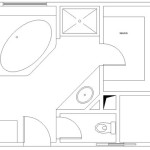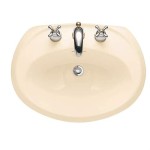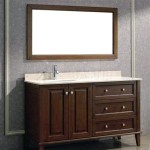Minimum Duct Size for Bathroom Exhaust Fan: Ensuring Proper Ventilation
Bathroom exhaust fans are essential for removing moisture, odors, and pollutants from the air, creating a healthier and more comfortable environment. The efficiency of an exhaust fan is directly impacted by the size and design of the ductwork. Choosing the right duct size is crucial to ensure proper ventilation and prevent issues like poor airflow, excessive noise, and even mold growth. This article will delve into the importance of duct size for bathroom exhaust fans, discuss factors influencing minimum duct size, and provide guidance on selecting the appropriate duct diameter for your specific needs.
Importance of Proper Duct Size
The size of the duct directly affects the fan's ability to move air effectively. A duct that is too small will restrict airflow, leading to reduced fan performance and potential backdrafting issues. Conversely, a duct that is too large can create excessive noise and waste energy. Optimal duct size ensures that the fan can draw air efficiently from the bathroom while minimizing noise and energy consumption.
Here are some key reasons why proper duct size is paramount:
- Improved Airflow: An appropriately sized duct allows the fan to effectively remove moisture, odors, and pollutants, improving air quality and preventing issues like mold growth.
- Reduced Noise Levels: Smaller ducts can cause increased noise due to air turbulence and friction. A well-sized duct minimizes noise levels, creating a more comfortable environment.
- Energy Efficiency: A properly sized duct allows the fan to operate at optimal efficiency, consuming less energy and reducing operating costs.
- Preventing Backdrafting: Backdrafting occurs when air from other areas of the house is drawn into the bathroom, potentially introducing pollutants and compromising indoor air quality. A sufficiently sized duct minimizes the risk of backdrafting.
Factors Influencing Minimum Duct Size
Several factors influence the minimum duct size required for a bathroom exhaust fan. These include:
- Fan Capacity (CFM): The fan's cubic feet per minute (CFM) rating measures the volume of air it can move per minute. Higher CFM fans generally require larger ducts to accommodate the increased airflow.
- Duct Length: Longer duct runs require larger diameter ducts to maintain sufficient airflow. Friction losses increase with duct length, necessitating a larger cross-sectional area to compensate.
- Duct Material: Different materials have varying levels of friction, impacting airflow. Smooth materials like galvanized steel offer lower resistance compared to rougher materials like flexible ductwork.
- Number of Bends: Each bend in the duct creates additional resistance, requiring a larger duct size to maintain desired airflow. Straight duct runs with minimal bends are more efficient.
- Bathroom Size: Larger bathrooms with more moisture and odor production often require larger ducts to ensure adequate ventilation.
Choosing the Right Duct Size
To determine the appropriate duct size, consider the following:
- Consult the Fan Manufacturer's Specifications: Most fan manufacturers provide guidelines on the minimum duct size recommended for their products. This information is typically included in the product manual or on the manufacturer's website.
- Use a Duct Sizing Calculator: Online calculators can help determine the optimal duct size based on fan CFM, duct length, and other factors. These tools provide a quick and easy way to estimate the appropriate duct diameter.
- Consider Professional Consultation: For complex installations or situations with unique requirements, consulting a qualified HVAC professional is highly recommended. They can assess your specific needs and provide tailored recommendations for duct size and configuration.
In general, the minimum duct size for a bathroom exhaust fan should be no smaller than the fan's outlet diameter. For example, a fan with a 4-inch outlet should have a duct diameter of at least 4 inches. However, it is always advisable to consult fan manufacturer specifications and consider the factors mentioned above to determine the optimal duct size for your specific situation.
Proper duct sizing is crucial for ensuring the effectiveness of your bathroom exhaust fan. By understanding the factors influencing duct size and consulting available resources, you can choose the appropriate duct diameter to create a healthy, comfortable, and energy-efficient bathroom environment.

Commercial Tf Bathroom Fans Continental Fan

The Basics Of Bath Fans Fine Homebuilding

Delta Breez Slim Series 100 Cfm Ceiling Or Wall Bathroom Exhaust Fan Energy Star Slm100 The Home Depot

Hunter Ellipse Decorative 100 Cfm Bathroom Ventilation Fan With Light And Night In Imperial Broe 90065 The Home Depot

5 Ways To Calculate Cfm For Bathroom Fan Wikihow

Fan S System Guide

Bathroom Exhaust Fans Building America Solution Center

Bathroom Exhaust Fans Building America Solution Center

Air King Energy Star Certified Quiet 50 Cfm Ceiling Bathroom Exhaust Fan Ak50s The Home Depot

Fan S System Guide
Related Posts







